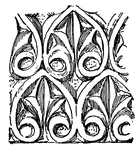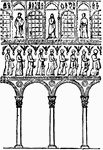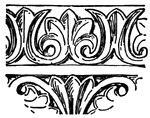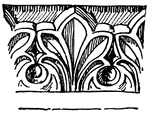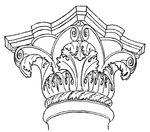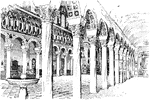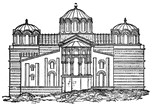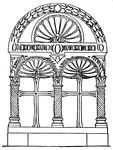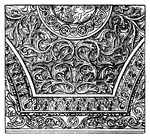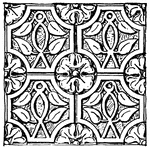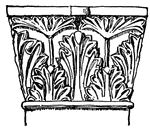Byzantine Architecture
This ClipArt gallery offers 34 pictures of architectural styles used during the time of the Byzantine Empire.
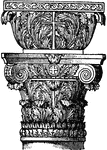
Byzantine Capital
"Byzantine Capital. The leading forms of the Byzantine style are the round arch, the circle, and in…

Byzantine Capital
The byzantine capital is found in the St. Sophia in Turkey. This design is called a Trapeziform, a byzantine…
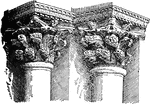
Byzantine Capitals
An illustration of a Byzantine capital from the central portal of St. Mark's Venice. In several traditions…
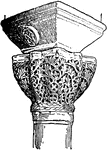
Byzantine Capitals
An illustration of a Byzantine capital from the the Church of St. Vitale, Ravenna. In several traditions…
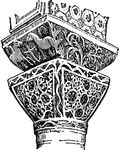
Byzantine Capitals
An illustration of a Byzantine capital from the the Church of St. Vitale, Ravenna. In several traditions…
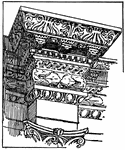
Palace of Diocletian Detail
Architectural detail from the Palace of Diocletian at Spalato, A.D. 300.
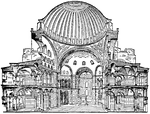
Hagia Sophia
Cross section of Hagia Sophia in Istanbul (historically Constantinople). The Greek name Hagia Sophia…

Exterior of Hagia Sophia
"Exterior of the Church of Sta. Sophia at Constantinople. Although the impression conveyed by this church…
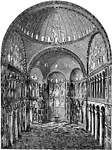
Interior of Hagia Sophia
"Interior of the Church of Sta. Sophia at Constantinople. Besides the Narthex, there was a second vestibule:…
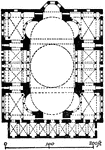
Plan of Hagia Sophia
Hagia Sophia is a former patriarchal basilica, later a mosque, now a museum in Istanbul, Turkey. Famous…

Section of Hagia Sophia
Hagia Sophia is a former patriarchal basilica, later a mosque, now a museum in Istanbul, Turkey. Famous…

Section of Hagia Sophia
"Section of the Church of Sta. Sophia at Constantinople. The Byzantine style of this first period reached…
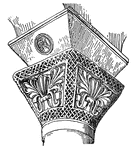
Impost Cap
Impost cap from St. Vitale. The impost cap (or impost-block) was interposed between the capital and…
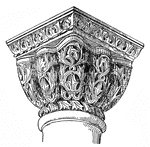
Impost Cap
Basket cap from St. Apollinare Nuovo, Ravenna. When an impost cap has extensive lacey or basket-like…
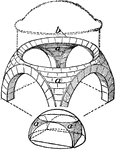
Diagram of Pendentives
A pendentive is a constructive device permitting the placing of a circular dome over a square room or…
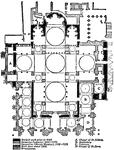
Plan of St Mark's, Venice, AD 929–1063
This is a plan of the St Mark's, in Venice, Italy. Erected AD 929 to 1063. This is an example of Italian…

